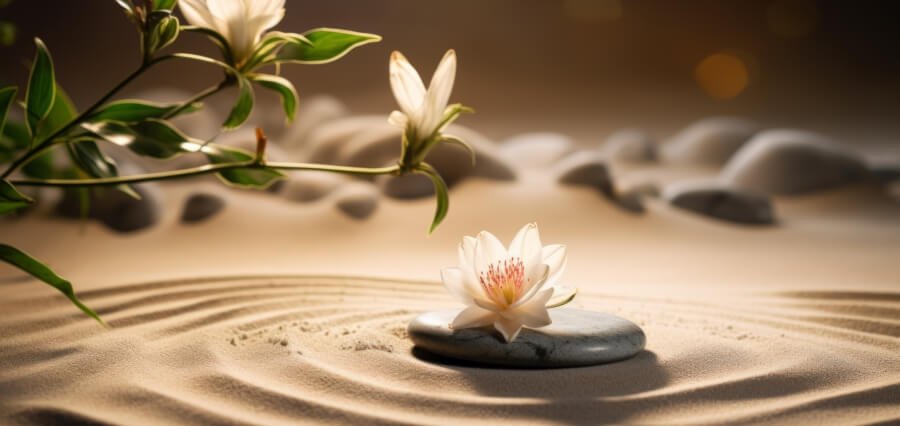The Art of Feng Shui
“How we discuss our lives is often very easily described with words that correspond directly to our environment,” says Karen Rauch Carter, Florida-based professional feng shui consultant and author of Move Your Stuff, Change Your Life. Home is our comfort zone, a place where all our worries and difficulties take a pause. If such environment is not positive and healthy, we are unfortunately going crazy in the end.
Feng Shui can be used as a tool to assist you in creating a space that supports and uplifts you while you work toward your wellness and health objectives. Let’s dive into the world of Feng Shui for a safe, healthy and tranquil environment.
What is Feng Shui?
Feng Shui, an age-old Chinese tradition, centers on organizing your surroundings to promote the circulation of positive energy and cultivate a serene ambiance within your home. Integrating these principles into your interior design can metamorphose your living space into a sanctuary of equilibrium and tranquillity.
In modern Feng Shui, emphasis is placed on achieving balance and promoting the flow of energy or life force. However, a more modern perspective involves utilizing objects, colors, or strategic placements to reprogram your subconscious and align it with a healthier mindset.
Elements of Feng Shui
Feng Shui revolves around the concept that the arrangement of objects and furniture within your home can influence the flow of energy, known as ‘Chi.’ To establish a balanced environment, it is crucial to grasp fundamental Feng Shui principles, including the Bagua map and the five elements (wood, fire, earth, metal, and water).
The Bagua Map serves as a guide, outlining how distinct zones of your home correspond to various aspects of your life, such as wealth, relationships, and health. By utilizing the Bagua map, you can optimize the arrangement of your space to enhance these aspects.
In addition, Feng Shui incorporates the five elements–wood, fire, earth, metal, and water. Each element possesses distinct qualities and aligns with different areas of your home. Striking a balance among these elements in your decor contributes to fostering a sense of harmony.
The First Important Step: Analyze Your Space
Before commencing your Feng Shui exploration, it is crucial to assess your living environment. Pause to examine the energy flow, recognize any clutter and comprehend the impact of furniture arrangement on the overall energy. Deliberate on the significance of natural light, colors, and materials within your space. Through heightened awareness of these elements, you can make informed choices to elevate the energy within your home.
Next Phase: Applying the Feng Shui Technique
It’s time to put Feng Shui principles into practice now that you have a better grasp of them and have examined your living area.
- Bedroom: The bedroom serves as a haven for rest and revitalization. To foster positive energy within this area, initiate by arranging the placement of your bed. Ideally, position it diagonally opposite the door to create a feeling of security. Opt for calming color palettes, integrate gentle textures, and declutter the space to encourage relaxation and equilibrium.
- Living Room: Positioning furniture to face a door or entryway is deemed authoritative. This entails arranging chairs in a way that places their backs, as well as yours, against a solid wall rather than leaving them free-floating in the center of a room.
- Home Office: Whether you possess a designated room or a compact corner for your home office, applying Feng Shui principles can enhance productivity and well-being. Orientate your desk towards the entrance, affording you a view of opportunities and inviting positive energy. Arrange your workspace thoughtfully, introduce natural elements, and tailor it to stimulate creativity and concentration.
- Kitchen: Decluttering holds significance in Feng Shui, and this principle extends to every room in your home, making the kitchen an excellent starting point. Begin by eliminating expired or unused items from your pantry and refrigerator, and discard single-use appliances and tools that are seldom used in your cooking routine. By removing unnecessary items, you create room for new possibilities to enter your life.
- Bathroom: If your bedroom’s headboard shares a wall with the bathroom, consider placing a mirror on that bathroom wall, facing outward. This helps in ‘pushing out’ the energy associated with plumbing, often described as ‘down the drain.’ Furthermore, ensure that the bathroom itself exudes a relaxing and pleasant atmosphere. Achieve this through personal preferences, such as using plush towels, adding a scented candle, or choosing a calming paint color.
Relaxing and Soothing Home: Period!
The practice of Feng Shui presents a distinct chance for us to turn our homes into sanctuaries of positive energy and equilibrium. Through comprehending the principles, assessing our living spaces and employing practical techniques, we can cultivate an environment that supports our well-being and elevates our mood. Therefore, embrace this journey and allow the age-old wisdom of Feng Shui to lead you in crafting a home that is harmonious and energizing, resonating with your authentic self.


